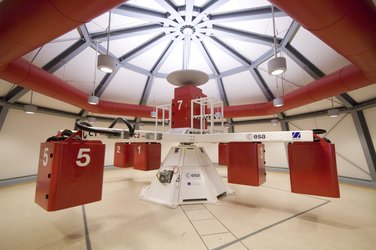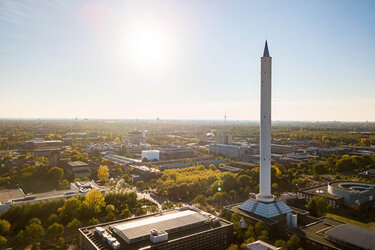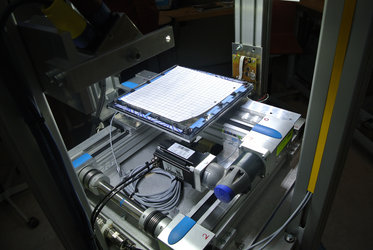Meet the teams: FELDs (2014)
A team of university students has been selected to develop and perform their microgravity experiment during ESA's ‘Drop Your Thesis!' 2014 campaign. Here is an introduction to the team.
![]()
![]()
Flexible Electromagnetic Leash Docking system
![]()
![]()
| University | Università degli Studi di Padova |
| Endorsing professor |
Alessandro Francesconi Università degli Studi di Padova |
| ELGRA mentor |
Guus Borst Dutch Space, Leiden |
| Assistant scientists | Francesco Branz, Riccardo Mantellato |
| Team | Davide Petrillo, Alessandro Cavinato, Federico Chiariotti, Marco Buonomo, Marco Gaino |

The FELDs team is composed of five master students from the University of Padua (Italy). They are testing a new technology to perform docking maneuvers in space.
The docking system that will be tested in microgravity is tether-based. When two spacecrafts need to dock and connect to each other, one shoots a spherical probe towards the other, which attracts the probe by generating a magnetic field with a strong electromagnet. By retracting the flexible wire the spacecraft can be reeled in and a soft docking can be performed.
The main objective of the experiment is a proof of concept for the new docking technology, testing if the docking can be achieved in controlled conditions.
This kind of docking system has significant advantages over traditional rigid docking systems. The most important advantage is the reduced fuel consumption due to the looser alignment requirements. This might be useful for several applications in the space sector, from refueling operations to personnel transfer on the ISS and even to debris capture.

Although several theoretical studies have been published in the last few years, this kind of docking system has never been tested in microgravity conditions, which is essential as the innovative idea relies on flexible systems and very low forces.
The experiment is a complete version of the docking system, with a simplified launching system. The target system is equipped with sensors to estimate what the impact forces on an actual spacecraft would be during the docking maneuver. In addition, several high-speed cameras record the whole flight of the probe in order to calculate its trajectory and evaluate the influence of the tether in its free flight.
Read the final experiment report here.






